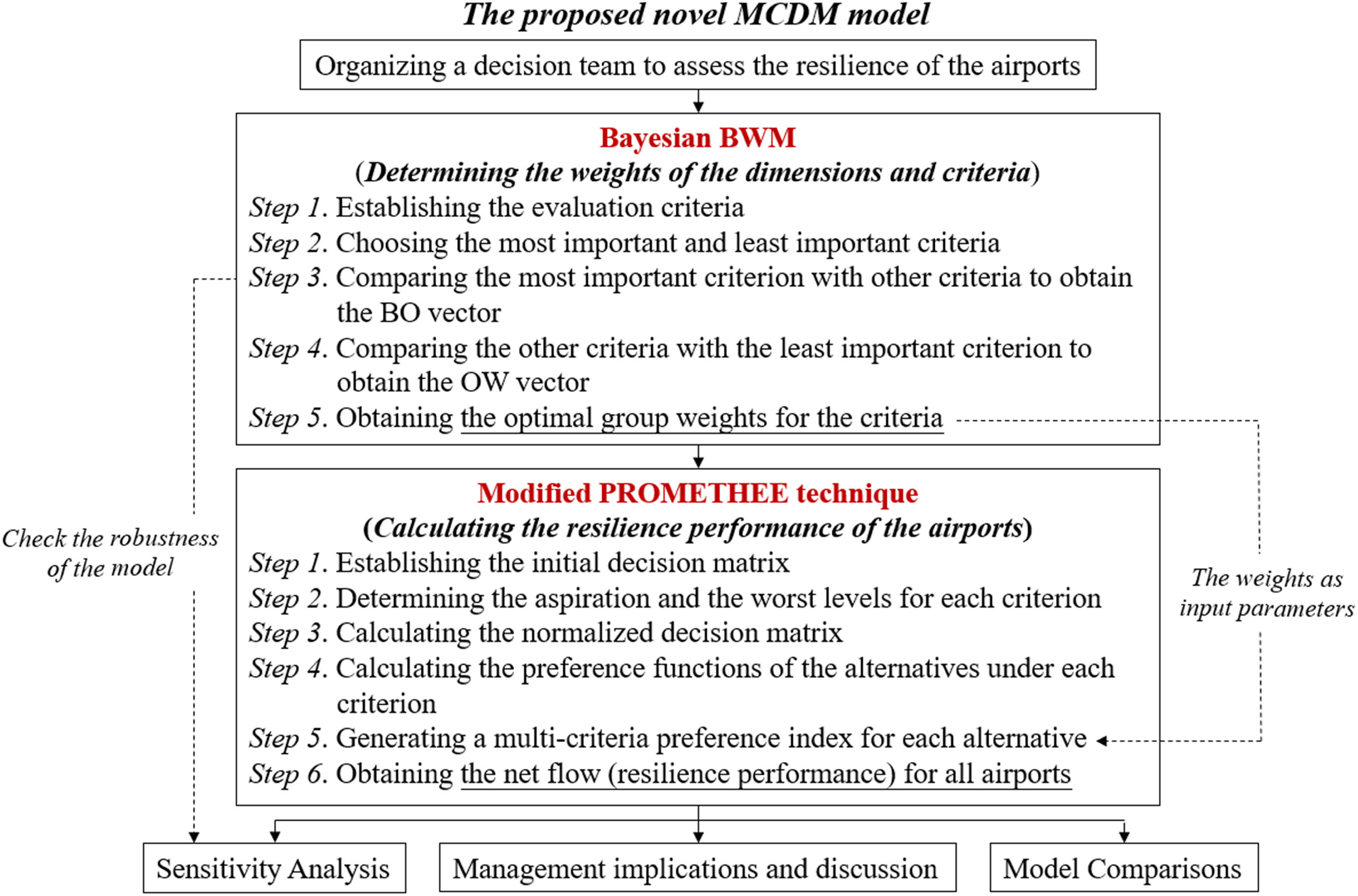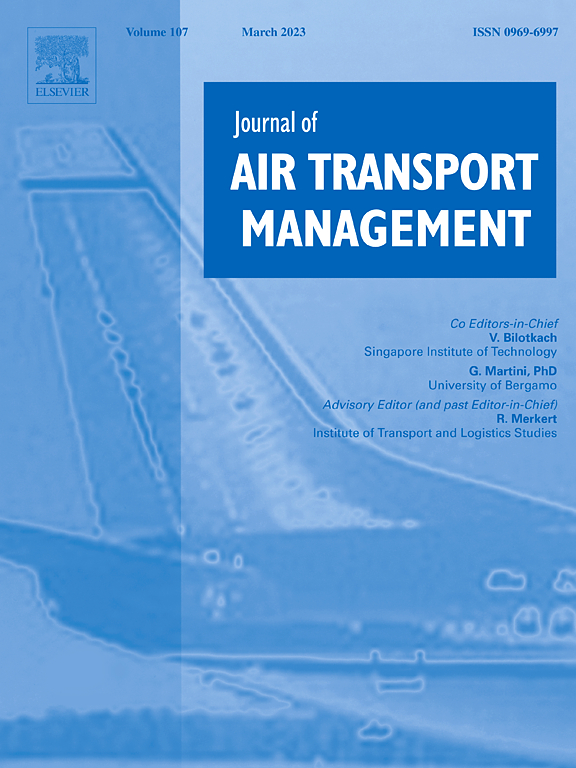Building an assessment model for measuring airport resilience
The proposed model consists of two stages. First, for the dimensions and criteria proposed in Section 2, Bayesian BWM is used to calculate their weights and prioritize the criteria. Subsequently, the criteria weights obtained are used as the input parameters for the modified PROMETHEE which is used to analyze the performance values of the alternatives (airports), and management policies to improve airport resilience are proposed.

Technology Overview
This paper proposes a novel assessment model for evaluating airport resilience. We develop a model that combines the Bayesian BWM and modified PROMETHEE. Taiwan‘s international airports are used to verify the usefulness and applicability of the model. The results show that the study can effectively assist policy makers to formulate improvement strategies.
Applications & Benefits
The framework is novel and comprehensive, and it echoes the four stages of critical infrastructure resilience. We used the top three airports in Taiwan to demonstrate the analysis process, and the results of the analysis were submitted to the relevant airport security departments. They deemed the results to have met their expectations, and that the developed framework could be applied to measure the resilience of other airports, which would help managers to strengthen airport weaknesses.
Abstract:
Airports are some of the most important facilities in any country's transportation system. It is important to protect such critical infrastructure from natural and manmade risks. However, it is difficult to build a risk prediction model based only on past statistical data. An experienced expert-based Multiple Criteria Decision-Making (MCDM) approach could be used to measure an airport's resilience and develop feasible protection strategies. This study proposes a novel assessment model for evaluating airport resilience. The model uses the Bayesian Best Worst Method (Bayesian BWM) to determine the optimal group weights of the criteria, and the modified Preference Ranking Organization Method for Enrichment Evaluations (modified PROMETHEE) technique to calculate the gap between each alternative and the aspiration level. The practicality and effectiveness of the model are demonstrated using Taiwan's airports as an example. In addition, sensitivity analysis and model comparisons are conducted to confirm the reliability of the proposed model. The results show that the proposed assessment system can effectively assist policy makers and airport security departments to formulate improvement strategies, thereby enhancing the resilience of this infrastructure.

Building an assessment model for measuring airport resilience
Author:Chun-Nen Huang, James J.H. Liou, Huai-Wei Lo, Fu-Jung Chang
Year:2021
Source publication:Journal of Air Transport Management Volume 95, August 2021, 102101
Subfield Highest percentage:99% Law #8/801
https://www.sciencedirect.com/science/article/pii/S0969699721000843
